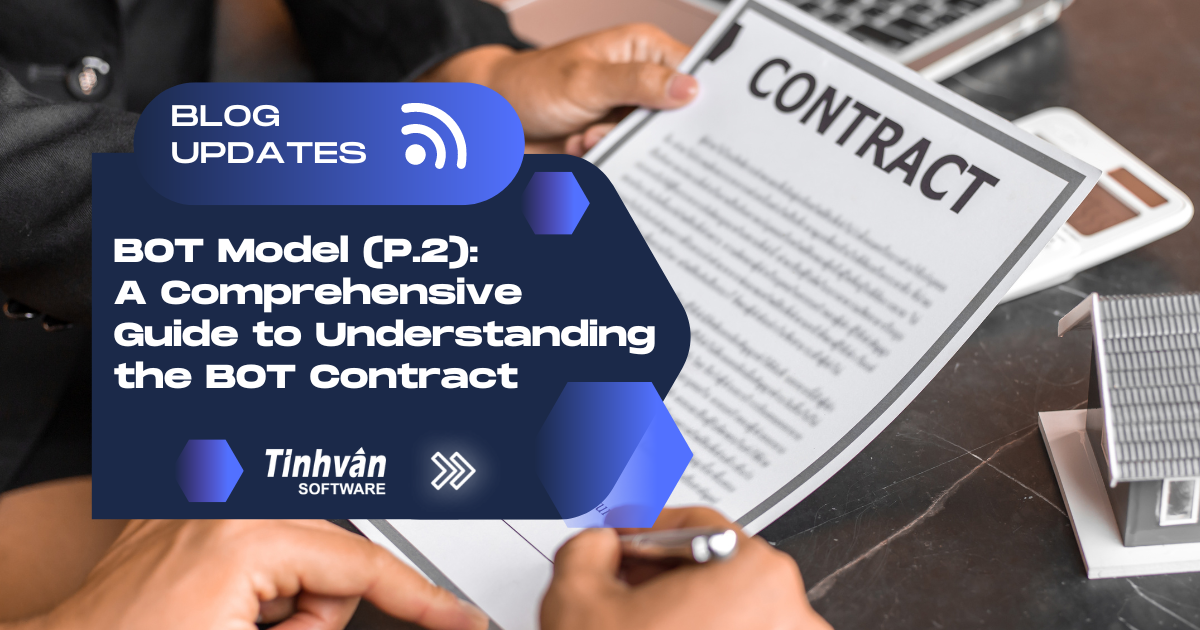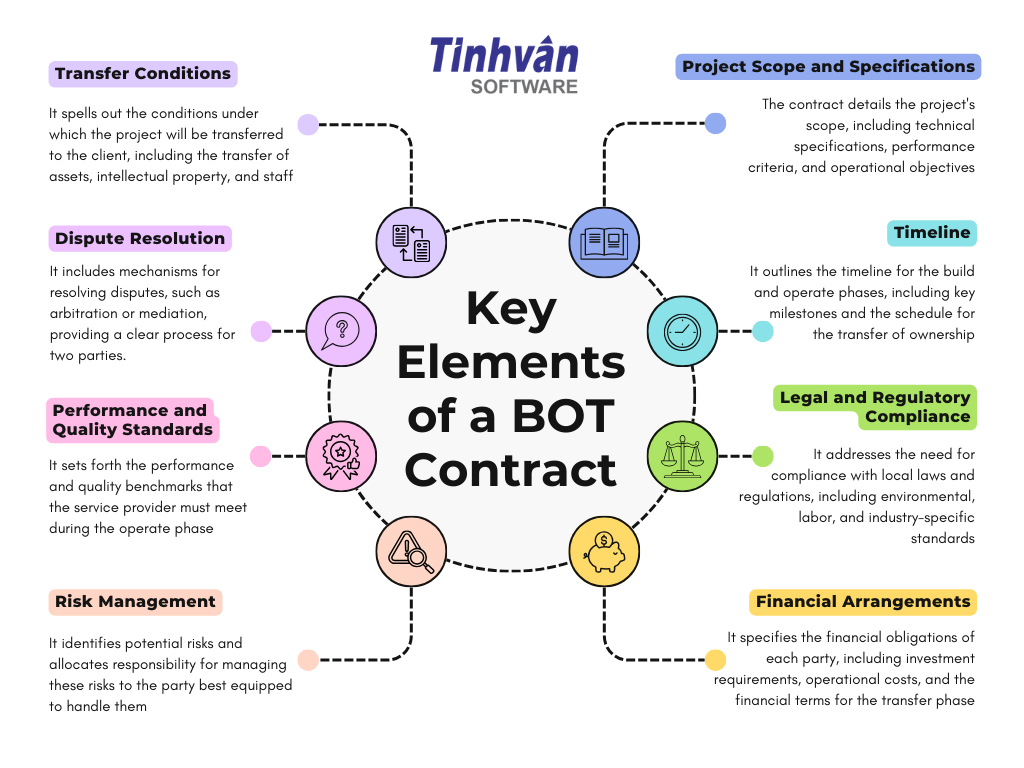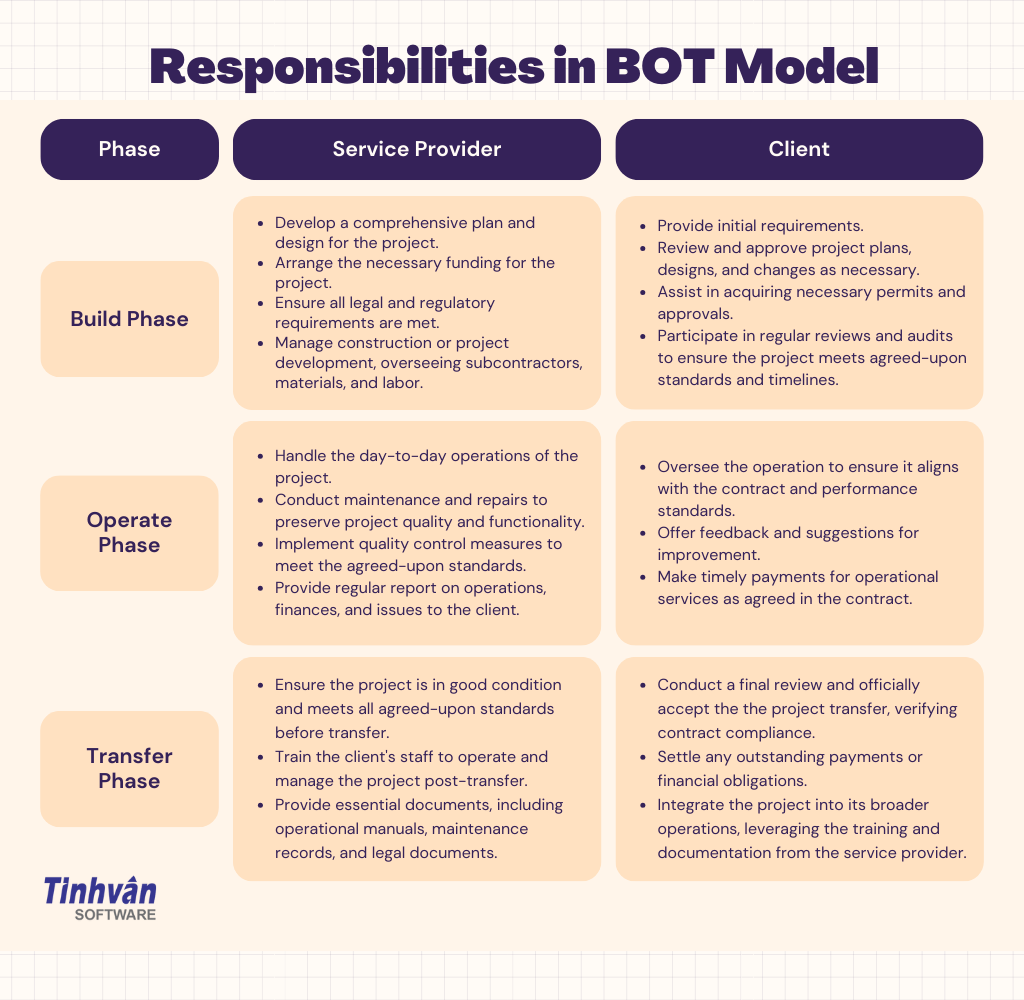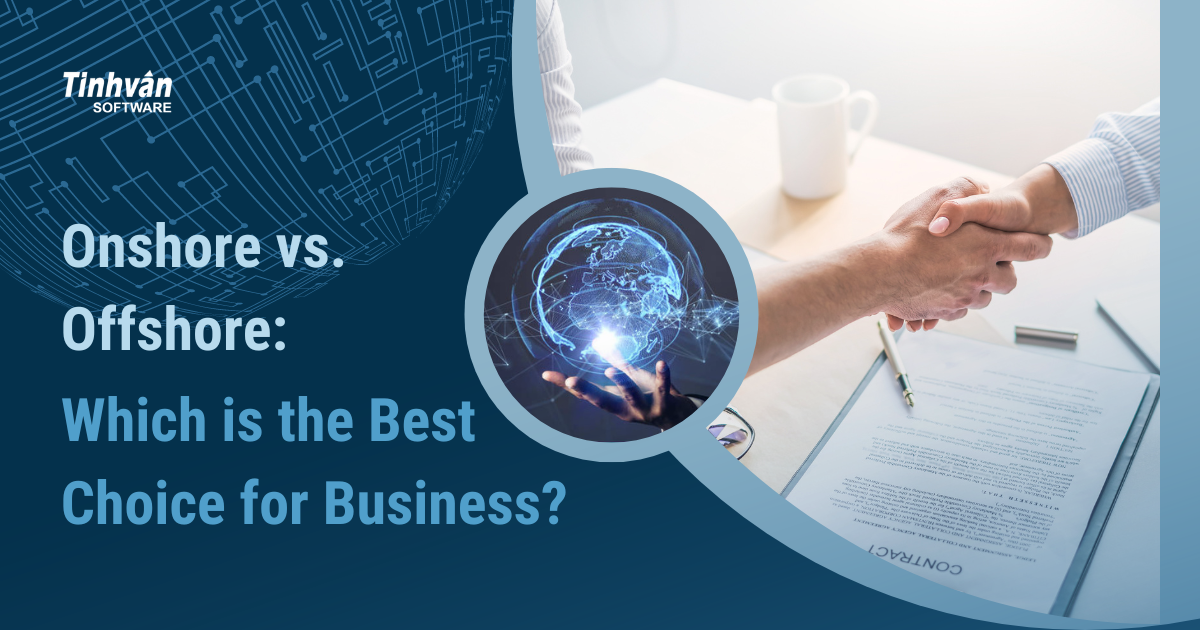
BOT Model (P.2): A Comprehensive Guide to Understanding the BOT Contract
The Build-Operate-Transfer (BOT) model represents a strategic approach within the IT sector for companies aiming to boost their technological capabilities or penetrate new markets while minimizing risk and investment. In a previous article, we explored the BOT model's definition within the IT sector, detailing its advantages, challenges, and essential factors for effective implementation (You can read more here). Now, Tinhvan Software is eager to offer a detailed perspective on the BOT contract and outline potential avenues for collaboration that foster mutual business growth.

A Build-Operate-Transfer (BOT) contract is a specialized agreement that forms the backbone of the BOT model, widely utilized in the IT sector and infrastructure projects. This contractual framework outlines the collaboration between a client (typically a corporation looking to expand its operations) and a service provider or contractor, who is tasked with building a specific project, operating it for a predetermined period, and then transferring the fully operational project back to the client. The BOT contract is crucial for ensuring clarity, defining responsibilities, and setting expectations for all parties involved.
Importance of a BOT Contract
A well-crafted BOT contract is essential for the success of any BOT project. It provides a legal and operational blueprint that guides the entire project from inception to completion. By clearly defining roles, responsibilities, and expectations, the contract helps to mitigate risks, manage costs, and ensure project alignment with strategic objectives. For the client, it offers a pathway to expand operations or enter new markets with minimized upfront investment and risk. For the service provider, it presents an opportunity to leverage expertise in project development and management, establishing a framework for collaboration and success.
In summary, the BOT contract is not just a legal requirement but a strategic tool that enables both parties to navigate the complexities of BOT projects effectively. It lays the foundation for a partnership that leverages the service provider's experience to achieve mutually beneficial outcomes, ensuring the project's success and the long-term satisfaction of the client.
Key Elements of a BOT Contract

- Project Scope and Specifications: The contract details the project's scope, including technical specifications, performance criteria, and operational objectives. This ensures that the service provider fully understands what needs to be built and operated.
- Timeline: It outlines the timeline for the build and operate phases, including key milestones and the schedule for the transfer of ownership. This helps in ensuring the project stays on track and meets the client’s strategic timelines.
- Financial Arrangements: The contract specifies the financial obligations of each party, including investment requirements, operational costs, and the financial terms for the transfer phase. Payment schedules, performance bonds, and penalties for non-compliance are also outlined.
- Legal and Regulatory Compliance: This section addresses the need for compliance with local laws and regulations, including environmental, labor, and industry-specific standards. It also covers licensing and permits required to execute the project.
- Risk Management: The BOT contract delineates the risk-sharing mechanism between the client and the service provider. It identifies potential risks and allocates responsibility for managing these risks to the party best equipped to handle them.
- Performance and Quality Standards: It sets forth the performance and quality benchmarks that the service provider must meet during the operate phase, ensuring that the project delivers the expected outcomes.
- Dispute Resolution: The contract includes mechanisms for resolving disputes, such as arbitration or mediation, providing a clear process for addressing any disagreements that may arise during the project lifecycle.
- Transfer Conditions: Finally, the contract spells out the conditions under which the project will be transferred to the client, including the transfer of assets, intellectual property, and staff. It ensures a smooth handover and operational continuity post-transfer.
Critical Aspects in BOT contract
When embarking on a Build-Operate-Transfer (BOT) project, especially in the IT sector, there are several critical aspects that both clients and service providers must carefully consider ensuring the success and sustainability of the venture. These considerations span legal, financial, operational, and strategic domains, highlighting the complexity and the need for thorough planning in BOT arrangements.
Legal Framework and Compliance
- Contractual Details: A comprehensive BOT contract that clearly outlines project scope, responsibilities, timelines, and conditions for the transfer is essential. This contract serves as the guiding document for the entire project.
- Regulatory Compliance: Understanding and adhering to local and international laws, including labor laws, data protection regulations, and industry-specific standards, is crucial to avoid legal pitfalls.
- Intellectual Property Rights: Agreements on the ownership and use of intellectual property developed during the project must be clear to prevent disputes.
Financial Arrangements
- Investment Structure: The initial investment and funding strategy, including contributions from both parties and any financing from external sources, need careful planning.
- Cost Management: A clear understanding of operational costs, including staffing, infrastructure, and maintenance expenses, ensures financial viability.
- Revenue Sharing: If applicable, the terms of revenue sharing during the operate phase should be transparent and agreed upon in advance.

Operational Excellence
- Quality and Performance Standards: Setting high but achievable performance benchmarks ensures the project meets both parties' expectations.
- Risk Management: Identifying potential risks (operational, financial, geopolitical, etc.) and establishing mitigation strategies is vital for project stability.
- Technology and Infrastructure: Ensuring the right technology and infrastructure are in place to support the project's goals, including considerations for scalability and security.
Strategic Alignment and Cultural Fit
- Alignment with Business Objectives: The BOT project should support the client's overall strategic goals and provide a clear value proposition.
- Cultural Integration: Efforts to align the operational and corporate cultures of the service provider and the client can enhance collaboration and reduce friction.
- Change Management: Strategies for managing the transition of operations to the client's control need to be developed early to ensure a smooth handover.
Talent Management and Development
- Recruitment and Training: Attracting and retaining the right talent is crucial for the project's success. Plans for training and development ensure the team remains competitive and aligned with project needs.
- Knowledge Transfer: Mechanisms for transferring knowledge from the service provider to the client's in-house team should be established to ensure continuity post-transfer.
Long-Term Sustainability
- Future-proofing: The project should be designed with an eye toward future trends and technologies to ensure its long-term relevance and sustainability.
- Post-Transfer Support: Agreements on ongoing support or consultancy from the service provider after the transfer can help address future challenges.
Careful consideration of these aspects ensures that a BOT project not only meets immediate operational needs but also aligns with long-term strategic goals, setting the foundation for a successful and sustainable venture.
Responsibilities in each phase
Each phase assigns specific responsibilities to both the service provider and the client.

1. Build Phase
Service Provider Responsibilities:
- Project Planning and Design: Develop a comprehensive plan and design for the project, including timelines, resources, and specifications.
- Financing: Arrange the necessary funding for the project. This can involve securing loans, investors, or using the company's funds.
- Regulatory Compliance: Ensure all legal and regulatory requirements are met, including permits and environmental assessments.
- Construction and Development: Oversee the actual construction or development of the project, managing subcontractors, materials, and labor.
Client Responsibilities:
- Providing Initial Requirements: Share detailed requirements, expectations, and objectives for the project.
- Approvals: Review and approve project plans, designs, and changes as necessary.
- Facilitating Permissions: Assist in acquiring necessary permits and approvals, leveraging local knowledge and relationships.
- Monitoring Progress: Participate in regular reviews and audits to ensure the project meets agreed-upon standards and timelines.
2. Operate Phase
Service Provider Responsibilities:
- Operational Management: Handle the day-to-day operations of the project, ensuring it runs smoothly and efficiently.
- Maintenance and Repairs: Perform routine maintenance and necessary repairs to maintain the quality and functionality of the project.
- Quality Control: Implement quality control measures to meet the agreed-upon standards.
- Reporting: Provide regular reports to the client on operational performance, financials, and any issues.
Client Responsibilities:
- Oversight: Oversee the operation to ensure it aligns with the contract and performance standards.
- Feedback: Offer feedback and suggestions for improvement.
- Payments: Make timely payments for operational services as agreed in the contract.
3. Transfer Phase
Service Provider Responsibilities:
- Preparation for Transfer: Ensure the project is in good condition and meets all agreed-upon standards before transfer.
- Training: Train the client's staff to operate and manage the project post-transfer.
- Documentation: Provide all necessary documentation, including operational manuals, maintenance records, and legal documents.
Client Responsibilities:
- Acceptance of Transfer: Conduct a final review and officially accept the transfer of the project, ensuring it meets all conditions of the contract.
- Final Payments: Settle any outstanding payments or financial obligations.
- Integration: Integrate the project into its broader operations, utilizing the training and documentation provided by the service provider.
Conclusion
In summary, the Build-Operate-Transfer (BOT) model is a collaborative framework that outlines distinct roles and responsibilities for service providers and clients through the phases of Build, Operate, and Transfer. This model efficiently leverages the service provider's expertise in project execution and operation, while ensuring the client's interests and objectives are met. It allows for innovative, cost-effective project delivery and operation, leading to a successful handover of a fully functional project. By fostering a partnership based on transparency, accountability, and mutual benefit, the BOT model stands as a robust strategy for achieving complex project goals, showcasing the effectiveness of strategic planning and collaboration in project development and management.
Why choose Tinhvan Software?
 Opting for Tinhvan Software's BOT service combines expertise, innovation, and cost efficiency in a compelling package. Our proven track record in delivering complex projects ensures quality and professionalism across all phases of the BOT model. Tinhvan Software's use of cutting-edge technology enhances project scalability and adaptability, while our financial model minimizes client upfront investment, making it a financially viable choice. The commitment to transparency and partnership ensures projects not only meet but exceed client expectations. Choosing TSO is a strategic step towards successful, efficient, and sustainable project execution. Contact us now to leverage top-notch technology and enhance business efficiency.
Opting for Tinhvan Software's BOT service combines expertise, innovation, and cost efficiency in a compelling package. Our proven track record in delivering complex projects ensures quality and professionalism across all phases of the BOT model. Tinhvan Software's use of cutting-edge technology enhances project scalability and adaptability, while our financial model minimizes client upfront investment, making it a financially viable choice. The commitment to transparency and partnership ensures projects not only meet but exceed client expectations. Choosing TSO is a strategic step towards successful, efficient, and sustainable project execution. Contact us now to leverage top-notch technology and enhance business efficiency.
Source: Tinhvan Software




